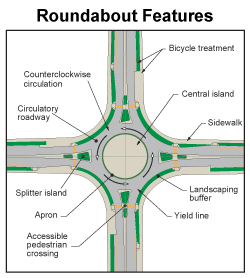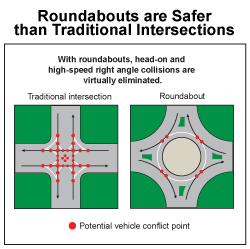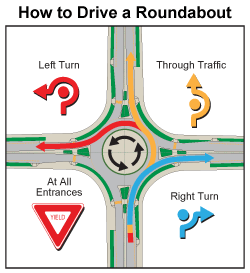A roundabout is a circular intersection or junction in which road traffic flows almost continuously in one direction around a central island.
Modern roundabouts are different from rotaries and other traffic circles. Roundabouts are typically smaller than the large, high-speed rotaries still in use in some parts of the country and are usually larger than neighborhood traffic circles used to calm traffic.
INDOT is using roundabouts to replace traditional four-way traffic signals to reduce accidents, traffic delays, fuel consumption, air pollution and construction costs, while improving safety, increasing capacity and enhancing intersection beauty.
Roundabouts have been successfully used to reduce congestion in residential neighborhoods and are accepted as one of the safest types of intersection designs.
Roundabouts are becoming a relatively common traffic feature in Indiana, with more than 256 constructed through 2016 by both INDOT and cities and towns. More than a dozen additional roundabouts are currently being planned by INDOT.
Related Links
Contact Information
Transportation Services Call Center
Indiana Department of Transportation
100 N. Senate Ave., IGCN 755
Indianapolis, IN 46204
855-463-6848
indot4u.com

 Yield-at-entry: Traffic entering the circle yields to traffic already in the circle.
Yield-at-entry: Traffic entering the circle yields to traffic already in the circle.
